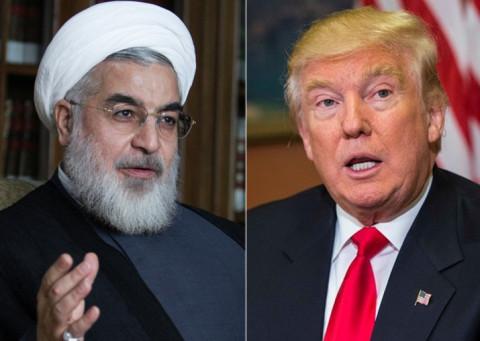Are American and Iranian Cultures Really So Different?
Once again, tensions between America and Iran are high; inspiring the usual flurry of media accounts keen to elaborate on the cultural and political differences between the two countries.
While, in the West, we depict the USA as ‘free’ and democratic, Iran, is typically reported as oppressive, authoritarian and in the grips of ‘crazed’ mullahs.
In Iran, media narratives tend to describe Americans as immoral, concerned with nothing but money, power-hungry and interfering in the rights of other countries.
These constantly repeated narratives have created such a stronghold in both Iran and America, that if you ask people what the cultural differences are between the two countries, you are likely to get an abundance of answers.
However, if you ask what binds Americans and Iranians together, it’s likely they will have a harder time thinking this through.
In reality, both countries actually share far more common cultural ground than you might otherwise think.
Unlike the narratives which describe them as polar opposites on cultural continuums, it seems that there’s actually quite a bit of overlap.
Let’s take a look at some of the key areas.
Multicultural
Both America and Iran are diverse multicultural, multi-ethnic countries, marked by people who practice a broad range of cultures and who speak many languages.
70% of the Iranian population, for example, is made up of Iranian people while the remaining part of the population is made up of Azerbaijanis, Kurds, Arabs, Assyrians, Armenians, Circassians, Turkomen and Qashqais.
In turn, 75% of the population in the USA are of white European heritage, with the remaining part of the population made up by African Americans, Indian and Alaska natives, Asians, Native Hawaiian, Hispanics, Latinos and those of mixed race.
Religious
Religion tends to be an important driver in both Iranian and American cultures.
Although the leadership of Iran is ultra-conservative and religious, Iranians themselves tend to be far more heterogeneous in their approach to religion.
Like the Americans, they live in a country which has been shaped by religion and in which the ultra-religious have the potential to exert a strong voice.
Interestingly, both countries are seeing a strong increase in the number of people who reject religion totally. Although statistics of this nature are understandably difficult to collect in Iran itself (apostasy is punishable by death in Iran), the Public Affairs Alliance of Iranian Muslims conducted a survey indicating that identification with the Islamic religion plummeted from 42% in 2008 to 30% in 2012. Sentiments coming from inside Iran also show a growing religious disassociation.
Likewise, a survey conducted by the American Family Survey (2012 – 2015) indicated that 44% of those aged under 30 years old, do not identify with a religion, which compares to only 21% of Americans aged over 65 years of age.
Patriotic
Both America and Iran have patriotic cultures, with citizens tending to believe that their country is ‘up there’ with the best.
If war were to occur, then members of both countries would be more than ready to defend their country and great honour would likely ensue from dying for the cause.
The patriotic culture of America is evident in the widespread flying of the American flag and the annual celebration of ‘Flag Day’. The national anthem is widely sung (and even mandated on a daily basis in some schools) and there are many festivals and holidays which celebrate America and American culture, such as Independence Day, Thanksgiving, Presidents’ Day, Columbus Day and Patriots’ Day.
Likewise, in Iran, the flag is treated with great respect and widely flown. Festivals and holidays entail a great deal of patriotic sentiment and often draw on a shared national love of historic Muslim heroes, such as the Martyrdom of Imam Ali and the Prophet Muhammad’s birthday.
Elitist
The concept of elitism tends to be embedded in the culture of both countries.
For Iran, this concept is derived from the historic position of the Persian Empire as one of the strongest empires the world has ever seen. Although the Persian Empire fell, the glory of this ancient dynasty continues to influence Iranian culture today and it’s not unfair to suggest that many Iranians believe that Iran can, once again, become a great world player.
Whereas Iran was historically ‘great’, America is the world’s current most powerful country, which, like Iran, influences the culture of the people and creates a sense of cultural elitism. Without a doubt, this sense is a strong driver in the patriotic cultures of both countries.
'Us and Them'
Both Iran and America tend to have a sense of ‘us and them’ embedded in the culture; meaning that the citizens of both countries are unified against a common enemy.
Without venturing into this deeply complex subject, it’s fair to say that this concept brings people together, unites them and strengthens their perceived need to ‘protect their culture’ and way of life.
With the concepts of multiculturalism, religion, patriotism, elitism and a sense of ‘us and them’ in both Iran and America, indicating just a few of the cultural synergies across both countries, maybe it’s time to start moving away from stereotypes of cultural difference and instead start exploring shared values?
Learn more
If you want more in-depth insights into either country, then check out our online training courses for Iran and the USA.
Related Posts
By accepting you will be accessing a service provided by a third-party external to https://www.commisceo-global.com/

 +44 0330 027 0207 or +1 (818) 532-6908
+44 0330 027 0207 or +1 (818) 532-6908
